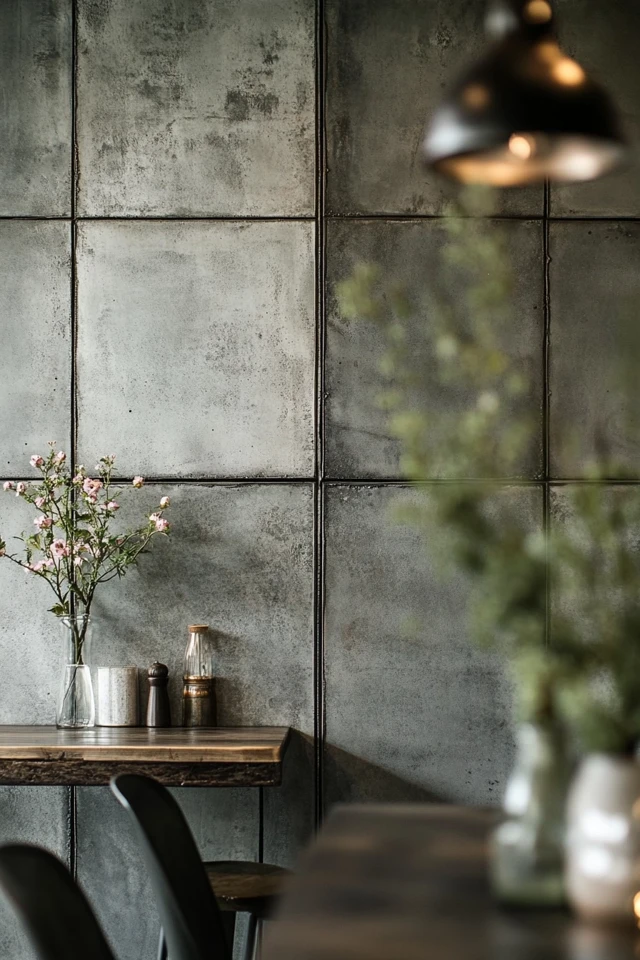Introduction
Concrete is a cornerstone of industrial design, celebrated for its raw beauty, durability, and versatility. It’s one of those materials that can look rough and rugged but also surprisingly refined, depending on how you use it. I’ll never forget my first industrial-style project where we used a polished concrete floor as the foundation of the design. What started as a practical flooring solution became the star of the space, reflecting natural light and adding a sleek, modern vibe. From that moment, I realized concrete wasn’t just a backdrop—it could be the main act.
Concrete is no longer confined to construction—it’s become a design element in its own right. Whether polished, poured, or textured, concrete adds depth and texture to any space, making it perfect for industrial interiors. In this guide, we’ll explore 10 creative ways to incorporate concrete into your home while maintaining the industrial aesthetic.
Why Concrete Is Perfect for Industrial Design
Key Benefits
- Durability: Concrete is incredibly strong and built to last.
- Versatility: It works for floors, walls, countertops, furniture, and even decor.
- Raw Aesthetic: Its natural, unfinished look fits seamlessly into industrial spaces.
- Customizable: Concrete can be polished, stained, or textured to suit your style.
- Affordable: Compared to other materials, concrete offers a high-end look at a lower cost.
1. Concrete Floors
Why It Works
Concrete flooring is a staple of industrial design, offering a sleek, minimalist look that’s easy to maintain.
How to Style It
- Opt for polished concrete for a modern, reflective finish.
- Use textured or stamped concrete to add depth and visual interest.
- Pair with rugs made of natural fibers like jute or wool to soften the space.
- Enhance the industrial vibe by exposing the joints or adding a matte sealant for a raw finish.
2. Concrete Walls
Why It Works
Concrete walls make a bold statement, adding texture and drama to your space.
How to Style It
- Keep the surface raw and unfinished for an authentic industrial feel.
- Pair concrete walls with warm materials like wood or leather to balance the look.
- Use concrete as an accent wall in living rooms or bedrooms to avoid overwhelming the space.
- Add wall sconces or uplighting to highlight the texture and depth of the concrete.
3. Concrete Countertops
Why It Works
Concrete countertops are both functional and stylish, offering a modern alternative to granite or marble.
How to Style It
- Opt for a smooth, polished surface for a sleek, minimalist kitchen or bathroom.
- Add an integrated concrete sink for a seamless, custom look.
- Pair with black metal or stainless-steel hardware for a cohesive industrial aesthetic.
- Use stains or pigments to add subtle color variations to the concrete.
4. Concrete Furniture
Why It Works
Concrete furniture adds a sculptural, modern element to industrial interiors.
How to Style It
- Incorporate a concrete coffee table or dining table as a bold centerpiece.
- Use concrete side tables with metal or wood bases to add texture and contrast.
- Pair concrete furniture with softer elements like plush cushions or rugs for balance.
- Opt for lightweight concrete or fiber-reinforced concrete for easier mobility.
5. Concrete Fireplace Surrounds
Why It Works
A concrete fireplace surround creates a striking focal point in industrial living rooms.
How to Style It
- Use raw, textured concrete for a rugged, dramatic look.
- Pair with exposed brick or wood paneling to enhance the industrial vibe.
- Add a mantel made of reclaimed wood or steel for additional visual interest.
- Use polished concrete for a more refined, contemporary appearance.
6. Concrete Kitchen Islands
Why It Works
Concrete kitchen islands are a functional and stylish addition to industrial kitchens.
How to Style It
- Use a concrete slab as the countertop for a seamless, minimalist design.
- Incorporate built-in shelves or cabinets with black or steel finishes.
- Pair with bar stools made of metal and leather for a cohesive look.
- Add pendant lighting with Edison bulbs to highlight the island’s industrial appeal.
7. Concrete Planters
Why It Works
Concrete planters add a touch of nature while staying true to the industrial aesthetic.
How to Style It
- Use oversized concrete planters for statement greenery like fiddle-leaf figs or rubber plants.
- Arrange smaller planters with succulents or herbs on shelves or windowsills.
- Pair the cool tones of concrete with vibrant greenery for a striking contrast.
- Opt for geometric or textured designs to add visual interest.
8. Concrete Bathroom Features
Why It Works
Concrete is water-resistant and durable, making it perfect for industrial-style bathrooms.
How to Style It
- Use concrete sinks or vanities for a seamless, custom look.
- Incorporate concrete tiles in the shower for a textured, modern vibe.
- Pair with black matte fixtures and glass shower doors for a cohesive design.
- Add soft towels and natural wood accents to balance the rawness of the concrete.
9. Concrete Lighting Fixtures
Why It Works
Concrete lighting fixtures are both functional and sculptural, adding a unique touch to industrial spaces.
How to Style It
- Opt for pendant lights with concrete shades above kitchen islands or dining tables.
- Use concrete table lamps or floor lamps for subtle, modern accents.
- Pair concrete fixtures with Edison bulbs for a vintage-industrial look.
- Choose minimalist designs with clean lines to maintain a sleek aesthetic.
10. Decorative Concrete Features
Why It Works
Concrete isn’t just for large surfaces—it can also be used for smaller, decorative elements.
How to Style It
- Incorporate concrete vases, bowls, or trays as subtle accents.
- Use concrete bookends or candleholders to add texture to shelves or tables.
- Create custom concrete art pieces or wall panels for a bold, creative touch.
- Pair with metal or wood decor to maintain the industrial aesthetic.
Picture Gallery
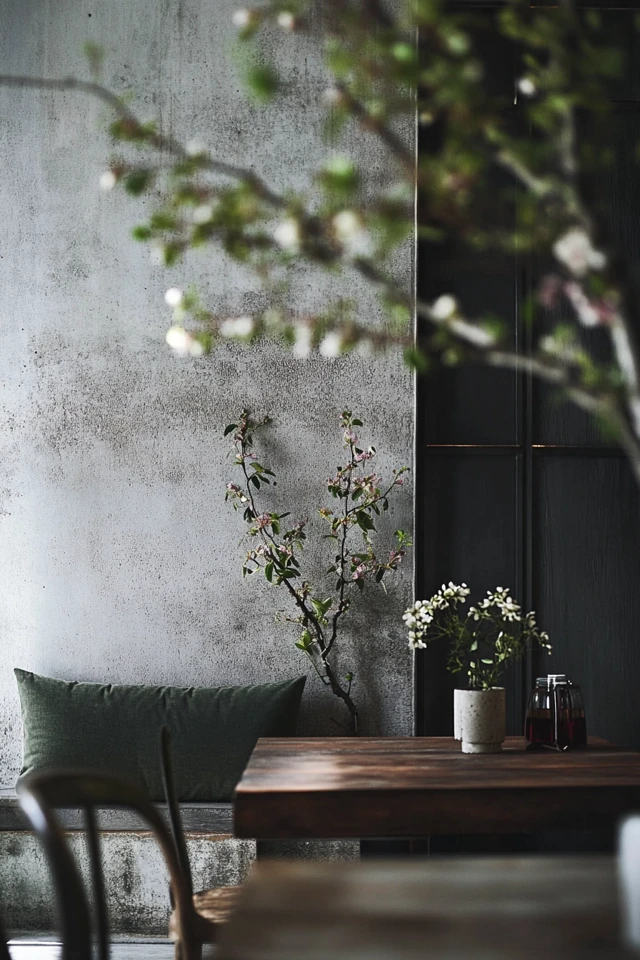

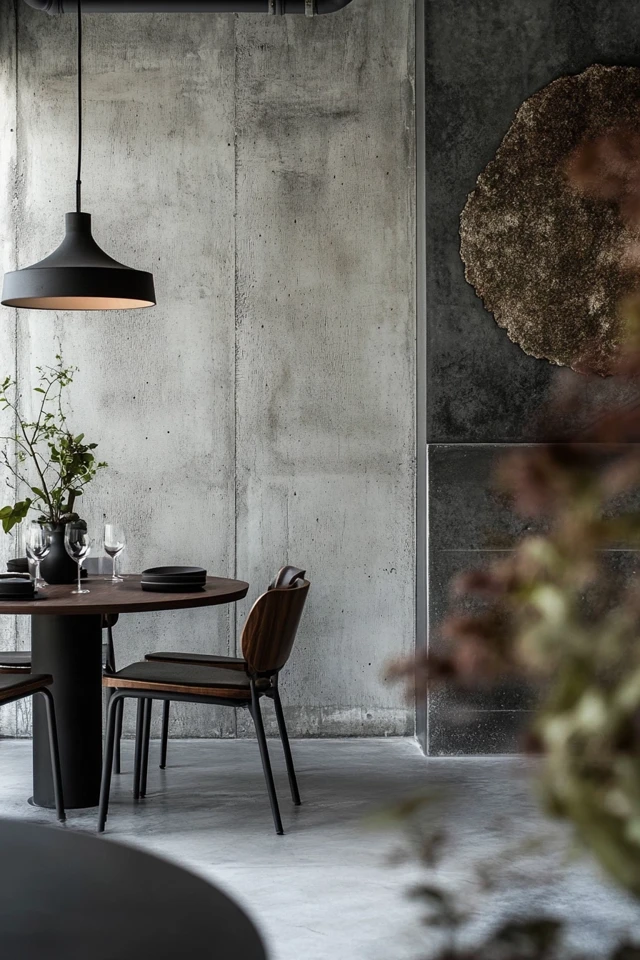

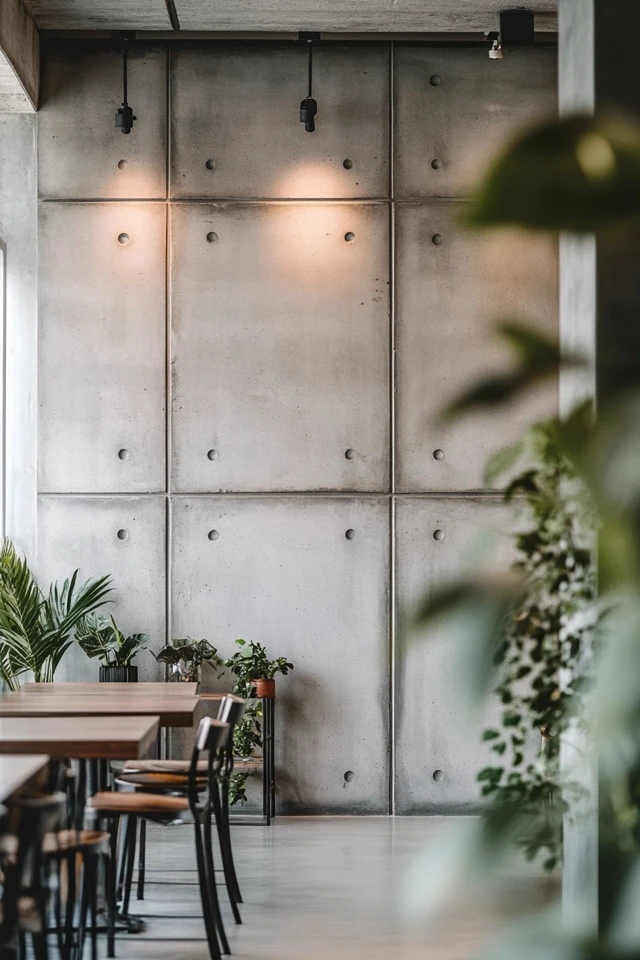
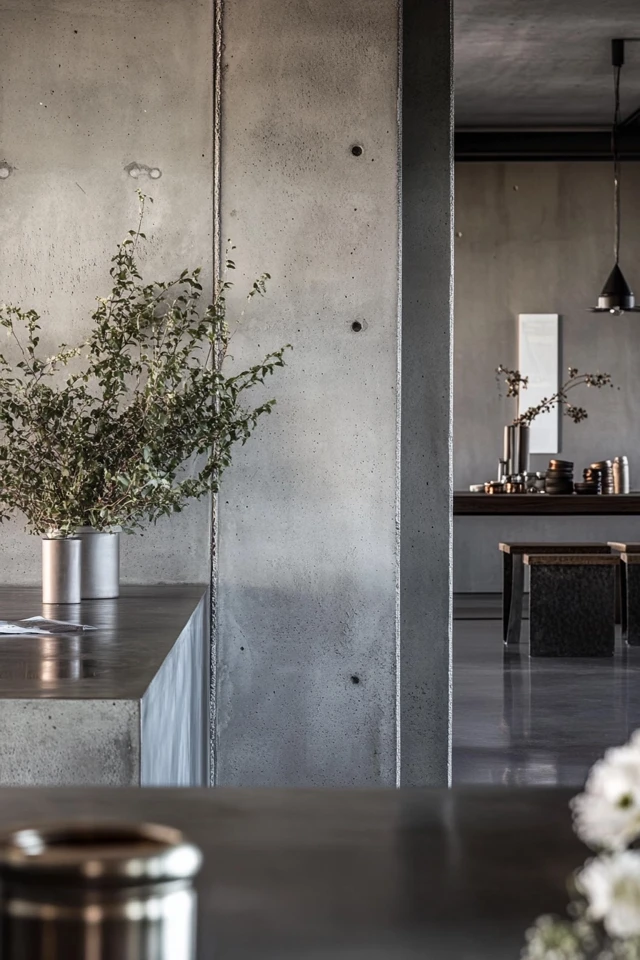
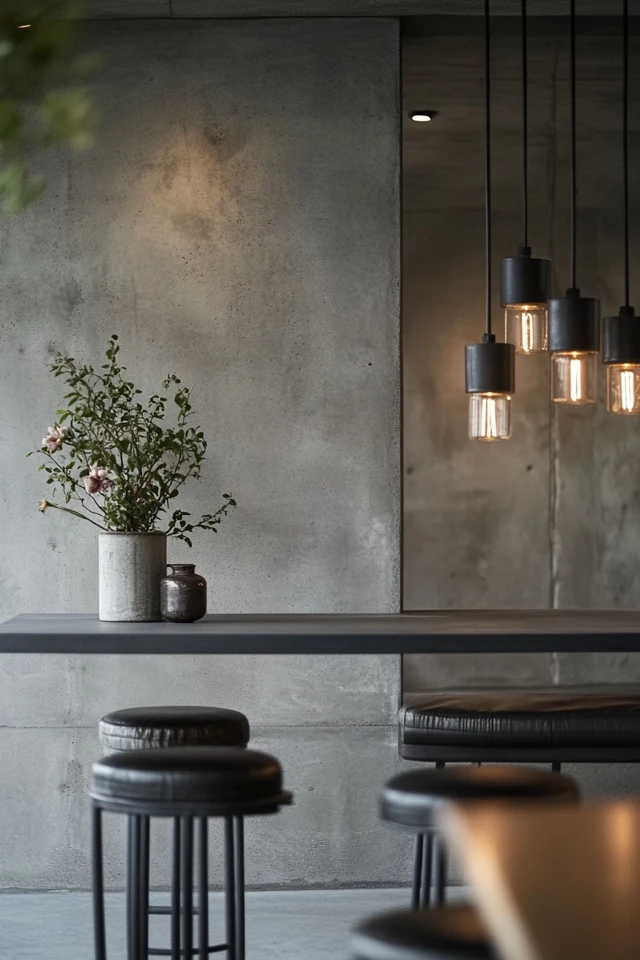
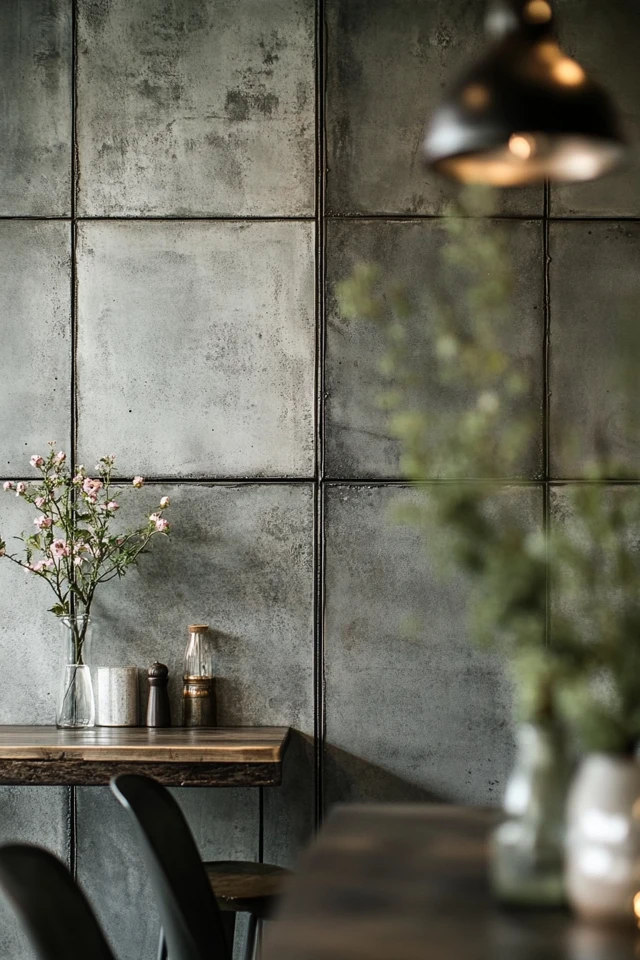
Conclusion
Concrete is the ultimate chameleon in industrial interiors—it can be raw and rugged or polished and refined, depending on how you use it. From floors and walls to countertops and furniture, concrete adds texture, durability, and style to any space.
What I love most about concrete is its ability to balance the industrial aesthetic with modern elegance. It’s a blank canvas that lets you experiment with textures, finishes, and colors to create a look that’s uniquely yours. Whether you’re going big with concrete floors or small with decorative accents, this versatile material will elevate your industrial design to new heights.
FAQ
Is concrete hard to maintain?
Not at all! Concrete is easy to clean and can be sealed to resist stains and scratches, making it low-maintenance and long-lasting.
Can concrete be used in small spaces?
Yes! Polished or light-colored concrete can make small spaces feel larger and more open.
What materials pair well with concrete in industrial design?
Concrete pairs beautifully with wood, metal, glass, and natural textiles like leather or linen.
Can I DIY concrete elements in my home?
Absolutely! You can create small items like planters or tabletops using concrete molds and mixes available at hardware stores.
How do I make concrete feel less cold?
Pair concrete with warm materials like wood, soft textiles, and warm lighting to create a cozy, inviting space.

